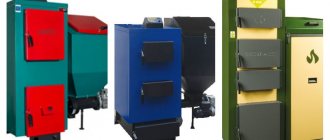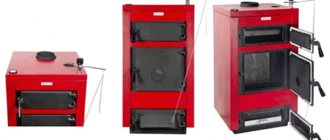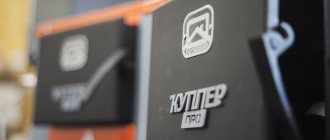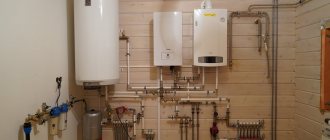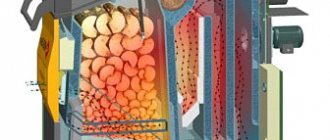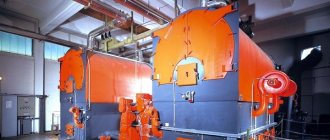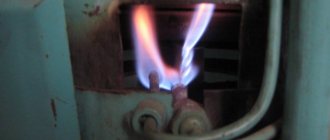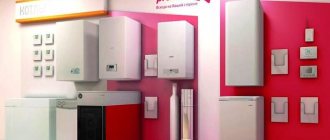Pros and cons of using heating elements for home heating
The main disadvantage of this heating method, as in the case of other electrical appliances, is the cost of operating costs. Electricity is still the most expensive source of heat (unless, of course, you have the opportunity to use free energy from the sun or wind, and you are connected to the mains power grid). Another disadvantage is the impossibility of repair in the event of a spiral failure. However, there are some positive aspects, which in some cases may become a priority.
- Environmental friendliness of the heating system. When using electric heating devices, there is no need to store and store any kind of fuel, and there are no harmful combustion products that enter the environment;
- Possibility of autonomous installation of the heating system in the absence of access to other heat resources (for example, gas);
- Small dimensions and a large selection of models in terms of power and functionality;
- The ability to automate the heating process: installation of heating elements with a thermostat;
- Low purchase and installation costs. There are models for which the cost does not exceed 1000 rubles. And the installation of heating elements in heating radiators can be done independently.
And finally, a few tips for self-installation of tubular electric heaters. How to properly embed the heating element into the heating system? First of all, you need to choose the right model by measuring the diameters of the radiators where the heating element is supposed to be installed and making power calculations. Then carefully read the instructions for the device, which should indicate whether additional sealing is required or not. This is one of the most important points, since contact of the conductor with a heat-conducting liquid will lead to the fact that your radiators are energized, and this is dangerous for residents. If the manufacturer indicates the need for additional sealing, then it must be done. In addition, it is unacceptable to use electric heating devices without grounding.
Location of heating elements in a cast-iron heating battery
Installation of heating elements in cast-iron heating batteries has a number of features. They are associated with the diameter of the nozzle and the direction of the thread. In general, the procedure for installing heating with heating elements in an existing system is as follows: disconnect the heating system from the heat source, drain the water, install the heating element, fill in the coolant, check the system's performance. When using heating elements in the heating system with thermostats, it is also necessary to check their operability after installation. It is also advisable to install water sensors and check the tilt angles of the radiators. Since air locks can significantly affect the operation of the entire system and disable the heating element.
Electric heaters for heating types
TENs were invented at the end of the nineteenth century in America. A patent for this was obtained in 1896. The very first products were a spiral insulated with a ceramic material and inserted into a metal tube. Such electric heaters for heating were practical products, but unsafe to use. Mass production of these devices began 50 years after their invention. Since that time, TENs have been widely used and have become one of the most popular heating devices powered by the electrical network. Since then, they have changed a lot, have become more perfect - you can see how they look now in the photo. Modern devices differ markedly from the very first models, but the principle of their operation has remained unchanged.
Heating elements for heating with a thermostat features of choice
Every homeowner wants to have an economical and trouble-free heating system in his home.
The variety of existing types of heating allows you to choose an individual and optimal solution for the needs of each house.
The main thing in the heating system is the coolant heater. Various boilers heat the heat carrier and, getting into the batteries, it gives the accumulated heat to the room. In case of boiler breakdowns, all radiators are excluded from the heating system of the house, and in case of severe frosts, the water in the system can turn into ice and simply break the batteries.
To avoid these problems, as well as to increase the stability and increase the power of the entire heating system, electric heating elements for heating with a thermostat allow. In many cases, they can be used to create a stand-alone local heater.
Varieties of electric boilers and their fundamental differences
Electric boilers differ in the type of working heating elements and are:
• Electrode type.
• Heating element type.
Electrode-type boilers to heat water use the property of water to conduct electric current, while generating heat. It is very simple to describe their basic structure: two electrodes are immersed in water and an alternating current is passed through them.
In heating boilers, a completely different principle is used. In these electric boilers, special tubular electric heating elements (TEN) are used as a heating device.
Since these boilers have fundamental differences in the types of heating elements, the repair of electric boilers also has significant differences.
Calculation of the power of devices
In order not to overpay for electricity and prevent emergencies, it is necessary to calculate the required power before installing heating elements in the heating system. And to do it "by eye" will not work. Calculations are based on the fact that for heating 10 sq.m. premises require 1 kW of thermal energy. The formula for calculating the power of the heating device is as follows:
where Pm is the calculated power, m is the mass of the coolant, T1 is the initial temperature of the coolant before heating, T2 is the temperature of the coolant after heating and t is the time required to heat the system to the optimal temperature T2.
Let's consider the calculation of power using the example of an aluminum radiator in 6 sections. The volume of the coolant of such a radiator is about 3 liters (exactly indicated in the model passport). Suppose we need to heat the radiator by connecting the heating element to the heating battery, in 10 minutes from 20 degrees to 80. Substitute the values into the formula:
Rm = 0.0066 * 3 (80-20) / 10 = 1.118. that is, the power of the heating element should be about 1-1.2 kW.
The heating element is installed in the lower section of the heating batteries.
However, this is only valid if water is used as the heat carrier. If it is necessary to make calculations for oil or antifreeze. then a correction factor of about 1.5 is applied. Simply put, the power of heating elements for heating oil heaters should be increased by about one and a half times. Otherwise, the estimated time to reach the optimum temperature will increase.
TEN and its varieties
Structurally, a tubular electric heater (TEN) is a carbon or stainless steel tube with a heat-conducting spiral of nichrome, a material with high resistance, placed inside. The tube is filled with a special coolant periclase, which is a good insulator and, moreover, has a high thermal conductivity, and is hermetically sealed. Periclase, being under high pressure, fixes the spiral centered on the axis, so it does not move when the heating element is bent and, depending on the model, give it the required shape.Outside, the ends of the spiral protrude, which serve to connect to the mains.
Heating tendencies can be divided into groups according to several parameters:
- By the type of heating surface, they are tubular, ribbed, rod, flat and tape:
- Tubular electric heaters are used in all electric heating devices in which the heating medium is heated as a result of the conversion of electrical energy and heat. They are made of carbon and stainless steel, copper, titanium, usually from 20 to 600 mm in length from a tube with a diameter of 6 to 18.5 mm of any configuration and capacity;
- strip heaters made of sheet aluminum or stainless steel are used to heat a flat surface, for example, a warm floor, but most often in industrial production;
- flat heaters are produced with a spiral in a ceramic heater for heating flat surfaces also in industry;
- rod heaters are designed to work in openings in metal parts.
finned tubular electric heaters are used in thermal curtains and convectors to heat gas or air that heats the room. The ribs made of metal tape are attached to the steel heating tube with special fasteners perpendicular to its axis. The branched outer surface allows to increase its heat transfer at a lower temperature, weight and overall dimensions of the heating element;
In addition, heating elements, differing in power from 15 to 15000 W per unit surface, may have additional options: thermostats and sensors for automatic shutdown in case of overheating.
Solid fuel boiler with heating elements - advantages and disadvantages
Some manufacturers offer to make to order, and sometimes they immediately complete such devices with electric heaters (heating elements). Initially, this idea was only applied to multi-fuel models. However, it should be noted that solid fuel boilers with electric heating elements are equipped with them for a different purpose than universal ones. In this case, the heater is used to maintain the set temperature between heating. It turns on in the event of a solid fuel burnout. Its work is controlled by a special device.
In this case, the heating element allows the owner not to rise at night for the next heating. Since the power of the heater in such models is small, such a device consumes very little electricity, which is an advantage of this model.
Advantages of heating elements
Heating elements (heating elements) have many positive characteristics:
- profitability and efficiency - when converting electricity into heat, there are practically no energy losses;
- simple installation - a heating element for a heating battery can even be installed independently and for this you do not need to issue a special permit in various instances. Each device is accompanied by detailed manufacturer's instructions explaining the connection procedure and operating rules;
- durability - it is achieved through chrome and nickel plating;
- compactness;
- safety;
- electric heating element with a thermoregulator for capillary heating allows you to regulate the temperature with a high degree of accuracy;
- save electricity consumption; allow the device to operate in pulses;
- affordable cost;
- availability of additional functions.
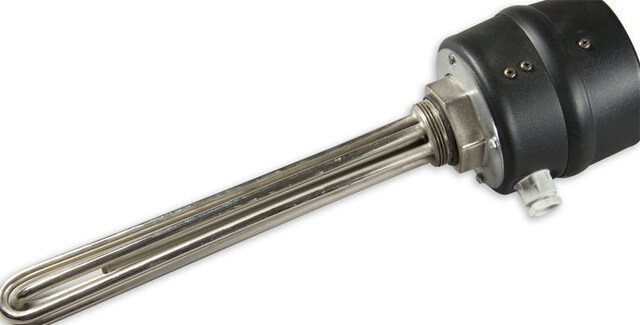
In addition to the positive qualities, such a device as a heating element for heating batteries has several disadvantages:
- high cost of electric heating of residential premises due to electricity prices;
- not in all settlements on the territory of the country the electric power from the substation allows the use of these devices.
About electric boilers
A classic electric heating boiler, one can say the default boiler, the type of which is not indicated, is considered to be electric boilers with heating elements.
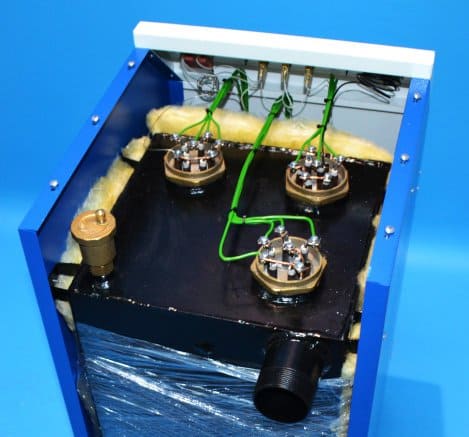

TEN is an abbreviation for a tubular electric heater. The analogue that you see in the electric kettle with a spiral.
Depending on the number of boiler heating elements, their power changes. Since the heating elements are often standard, the capacities of electric boilers from different manufacturers are also standard. It is 6/9/12/14/18/21/24/28 kW.
It is worth noting that the concept of an electric boiler is much broader than just a heating element boilers. Induction and electrode boilers, which are also electric, have become widespread.
Heating boilers with heating elements
Currently, boilers that run only on solid fuels are rarely used. Instead of them, a wide selection of combined and universal heating units is presented on the domestic market, operating not only on solid fuels, but also additionally on other types of energy carriers. In a large assortment, consumers are offered electric solid fuel heating boilers.
Units of this type are intended for heating residential, household, agricultural and other premises. A number of models can be used as both the main and backup source of heat supply. They are also installed for operation with other types of heating systems.
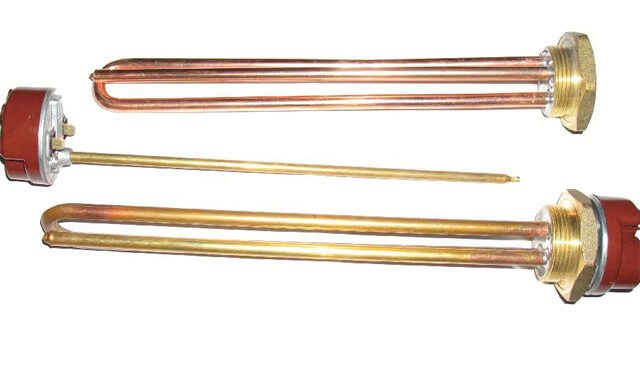

The solid fuel boiler has the following advantages:
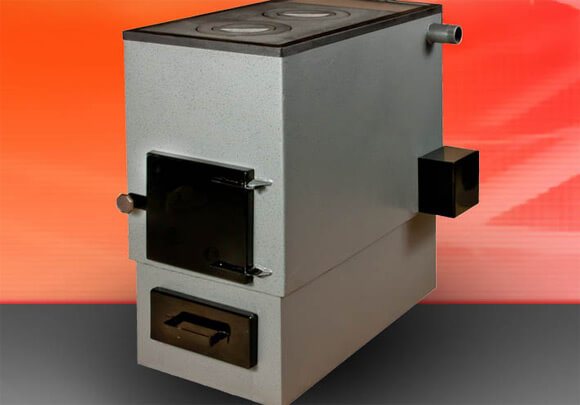

Some models have additional elements:
- Heating element for a heating boiler with a capacity of 2 kW, complete with a thermostat and a temperature limiter;
- draft regulator, which allows to automatically regulate the flow of air into the combustion chamber of the device.
In the event of a breakdown, heating elements for heating boilers can be replaced with new products.
At the stage of designing a heating system for a house or apartment, you should carefully consider options for its creation, which will save the family budget and provide coziness and comfort.
What is an automatic apparatus?
Solid fuel devices are most often wood-fired models. To upgrade them, you need to add another door and then pellets can be used as fuel. However, the upgradeability will differ for different boiler models. And often it depends on the performance, the power of the apparatus, the number of types of fuel permitted for use.
The solid fuel automatic boiler is used to heat residential buildings, public and industrial premises.
They come in two flavors:
- Steel
- Cast iron
The latter are equipped with a coolant sensor located directly on the boiler. It controls the damper if the temperature rises or falls. Its opening increases the flow of air, which leads to more intense combustion of the fuel.
The advantages of such equipment are its reliability, safety and independence from electricity.
Radiator electric home heating
Installation diagram of heating element in a radiator
Before embedding the heating element in the heating system, the parameters of the radiator are needed. The main one is the diameter of the connecting pipe. Currently, manufacturers produce products in two sizes - 1/2 and 3/4 inches. Then a comparative analysis of the heating parameters is carried out before and after the installation of the heating element.
Connecting the heating element to the existing heating
If it will be used as an additional method of heating water, it is necessary to take into account the change in the hydraulic pressure when passing through the radiator.Since the flow diameter of the system will be smaller this month, it is recommended to install a larger pump.
When a radiator is connected to the system, the installation of a heating element for heating the house will be impossible. To do this, either change the wiring diagram to the top, or install a heating element on the top of the battery, which is not recommended by specialists.
Installation is often done in old cast iron batteries. Before carrying out work, you must first check the direction of the thread of the branch pipe (right or left) and also measure its diameter. Then you should adhere to the following scheme:
- Draining the coolant. It is forbidden to install a heating element in a heating radiator if there is water in it;
- Checking the battery level. Even with a small angle of inclination, the likelihood of the formation of air locks increases significantly;
- Installation of a heating element in the pipe. To seal the holes, you must use the gaskets supplied with the heating element or make them yourself;
- Installation of a block with a thermostat, if there is one in the kit.
An example of installing a heating element in a cast-iron radiator
After that it is necessary to fill the system with water. With the help of the installed Mayevsky crane, possible air jams are removed. Before switching on, for safety reasons, a possible heating coil-battery circuit is checked using a tester. If it is, you need to dismantle the heating element and install it again, improving the sealing.
Radiator electric heating
When organizing self-made heating on heating elements, installation of the pipeline is not necessary. A heating element must be installed on each radiator. In this case, it is possible to mount models of different power, depending on the thermal regime in a particular room of the house. The advantages of such a system are as follows:
- Saving on the purchase of materials and reducing the labor intensity of installation work;
- If a heating element with a thermostat for heating and a temperature sensor connected to it is used, the room heating degree will be adjusted automatically;
- Minimum heating inertia of the system.
But all these positive qualities can be overridden by the total cost of service. Therefore, before heating with electric tendens, you need to calculate not only the cost of purchasing materials and components, but also the subsequent costs of electricity. Only then should a heating system of this type be introduced.
It is recommended to purchase factory radiators with installed heating elements. The efficiency of their work is higher than that of home-made ones, since a special oil is used as a coolant. Even with the heating element turned off, it will give off heat to the room for some time.
What characteristics should be considered when choosing?
In the domestic market, solid fuel boilers with automation are represented by models of domestic and foreign manufacturers. Among them, the most popular are automatic devices of the brands: Dakon, Viessman, Bourgeois-K. However, it should be remembered that foreign and local boilers differ in price, quality, efficiency, wear resistance. In all these parameters, the championship is still behind foreign models. This must be taken into account when choosing a model for your needs.
Still, the most important parameter is power. If this parameter for the boiler is insufficient, then it will be impossible to achieve a comfortable temperature in the house. The optimal option is considered when the thermal power of the system can provide heat loss in the room at an average static outside temperature during the heating season.
For its approximate calculations, the following values are taken - 1 kW per 10 m², but such data are suitable only for well-insulated houses.
In other cases, in addition to the area, you will have to take into account other parameters, such as:
- Wall thickness
- Insulation type
- Number of windows
And the calculation will turn out to be much more complicated, so it is better if it is performed by a specialist.
Also, when choosing, it is necessary to take into account other factors, for example, the thermal insulation of the building. If it is located in an open area, then the boiler output must be increased.
The next point is fuel availability. Here you will have to evaluate the resources of your area. Which type will be more convenient for you? Firewood or coal?
And then make a list of functions that an automatic long-burning solid fuel boiler should perform. Whether it is required only for heating or also for preparing hot water, and possibly food. Do you need an automatic mode for the device?
Two ways to connect the heating element to three phases.
"Three-phase" used to be something not very necessary and understandable for a common man in the street, but nowadays it has become a necessity for a private house. It is needed primarily for heating with electricity. Since an electric boiler has a large power (in most cases, more than 6 kW), when using one phase, you will need to lay the wiring with a cable with a large conductor cross section. And this will be expensive, especially if the cable conductors are made of copper. In a three-phase network, the cross-sections of the conductors will be noticeably smaller, for this reason, most modern electric boilers are connected to the "three-phase". Now let's talk about the basic schemes for connecting heating elements to such a network.
Star.
This method is used if the heating element is designed for 220 V. In addition, the "star" requires that a neutral wire be brought from the shield. For clarification, consider the following figure:
In this case, instead of two jumpers, there will be one. And it will be connected to zero, and the three remaining free ends will be connected to the corresponding phases. If you look at the block nut from above, then it will look like this:
Triangle.
This method is used to connect heating elements designed for 380 V. If you suddenly decide to put heating elements designed for 220 V with a "triangle", they will simply burn out. Don't miss this important point. The main difference between a "triangle" and a "star" is the absence of a neutral conductor. There are only 3 phases and nothing else. To better understand what is at stake, look below:
In the picture, everything looks simple and clear, but if you start connecting the contacts on the block nut, you get the following:
It looks complicated, but in fact it does not differ in any way from the top picture. The colored lines and numbers here indicate the phases, and the letters indicate the heating elements of the block.
Wiring diagram for connecting the electric boiler to the 380 V (three-phase) power grid
The general wiring diagram for connecting a 380 V electric boiler is as follows:
As you can see, the line is protected by a three-phase residual current circuit breaker; an earthing connection must be connected to the boiler body.
As usual, by tradition, I post a diagram for connecting a three-phase electric boiler with a circuit breaker (AB) plus a residual current device (RCD) in a circuit, which is often cheaper and more accessible than Dif. machine.
It is convenient to select the ratings of the protective automatics and the cable cross-section for three-phase electric boilers of various powers according to the following table:
In three-phase electric boilers, three heating elements are usually installed at once, sometimes more. At the same time, in almost all household boilers, each of the tubular electric heaters is designed for a voltage of 220 V and is connected as follows:
This is the so-called "star" connection, for this case the neutral conductor is supplied to the boiler.
The heating elements themselves are connected to the network as follows: a jumper is connected at one of the ends of each of the tubular electric heaters, the phases L1, L2 and L3 are alternately connected to the remaining three free ones.
If your boiler has heating elements designed for a voltage of 380 V, their connection diagram is completely different and it looks like this:
Such a connection of the heating element of an electric boiler is called a "triangle" and at the same voltage of 380 V, as in the previous "Zvezda" method, the power of the boiler increases significantly. In this case, a zero conductor is not required, only phase wires are connected, the electrical connection diagram, respectively, looks like this:
Do not deviate from the connection diagrams acceptable for your electric boiler, if there are heating elements for 220V with a three-phase connection, do not remake the circuit into a "triangle". As you understand, theoretically they can be reconnected and a voltage of 380 V can be obtained on the heating element, respectively, and an increase in their power, but at the same time they will most likely simply burn out.
How to determine the correct connection diagram for heating elements with a star or a triangle and, accordingly, what voltage are they designed for?
If the instructions for connecting your electric boiler have been lost or there is simply no way to refer to it, you can determine the correct connection diagram in a domestic environment as follows:
1. First of all, inspect the terminals of the heating element, most likely the manufacturer has already prepared the contacts for a certain circuit. So, for example, for connection with a "star" and heating elements for 220V, three terminals will be connected by a jumper. 2. The very presence of the zero terminal - "N", indicates that the heating element is 220 V and they must be connected according to the "Star" scheme. At the same time, its absence does not at all mean that the heating element is 380 V. 3. The most reliable option to find out the heating element tension is to look at the marking indicated either on the flange to which the tubular electric heaters are fixed, or on the heating element itself its parameters are squeezed out without fail: If you are unable to find out for sure the voltage for which your electric boiler is designed and the connection diagram for its heating element, but it is "very necessary" to connect, I advise you to use the "Star" circuit. With this option, if the Teng are designed for 220 V, they will work normally, and if at 380 V, they will simply give out less power, but the main thing will not burn out.
In general, cases are different, and it is very difficult to cover them all in the format of one article., so be sure to write in the comments your questions, additions, stories from personal experience and practice, this will be useful to many!
How to choose heating heating elements
Heating element for heating with plates
How to choose the right ten for the heating system? There are many manufacturers currently offering similar products. However, not always the quality and technical parameters correspond to the required ones.
Therefore, before purchasing, you need to pay attention to the following performance characteristics of the heater:
- Rated and maximum power. If a heating element is needed in a heating boiler, its capacity must be enough for the system to work. The simplest calculation method is for 10 sq. M. houses need 1 kW of thermal energy;
- Power supply type. For models with a power of up to 3 kW, you can use a 220 V home network. If it is planned to install a ten for a heating system of greater power, a three-phase 380 V network should be installed.This may be due to difficulties in the preparation of documentation;
- The presence of a thermostat. For a radiator electric heating system, this is the main selection factor. If you buy a ten without the ability to adjust the power, it will constantly work at maximum mode. Thus, the cost of electricity will rise sharply;
- Cost. The average price of a 2 kW model starts at 900 rubles. The cost of more powerful ones can be up to 6,000 rubles. They are often made to order.
The appearance of the heating element can also affect its performance and efficiency. The best option would be to purchase a ribbed heating element for the heating boiler. It differs from the usual ones in that additional heat exchange plates are located on the protective shell.
Thanks to them, the heating area increases. This design is typical for heating elements in heating radiators of a larger diameter. Reviews about them speak of increased heat transfer even with a minimum operating mode. But their overall dimensions do not always make it possible to install in a battery. Therefore, most often they purchase simple tubular-type heaters. To increase the efficiency, you can buy a block of heating elements with a thermostat. It differs from traditional ones by the presence of several heating elements on one base.
Installation of a new heating element block in the boiler
To do this, we need a new heating element block (in the boilers manufactured by LLC Pyramida plus, heating elements with a G2 ½ flange thread are installed), a paranitic gasket or a sealing ring (made of oil and petrol resistant rubber).
We lubricate the connecting places on the flask and on the heating element block with a thin layer with lithol.
We install the gasket on the heating element block and twist it clockwise into the flask. It is important to check, before installing the unit in the flask, the connecting places on the flask and on the heating element block from debris, so that the connection is tight during operation. Next, we return the flask to the body and fix it on the wall.
How to use it correctly
In addition to the banal failure to comply with the operating instructions and safety rules, heating elements can break due to:
- shell corrosion;
- its rupture as a result of overheating;
- constant drops in mains voltage;
- and just a general depressurization of the tube.
In order for the device to heat your home as long as possible, you must follow simple rules:
- When connecting the wires, you should not be too zealous and unnecessarily tighten the nuts of the contacts of the output ends of the heating element - they may burst.
- The device must be connected to the network only when it is in the water. Otherwise, by lowering the heated spiral into water, you can get a fairly strong explosion.
- The surface of the heating tube must be descaled regularly. It all depends on the quality of the water, but with constant work, it is best to clean it once a quarter, avoiding the build-up of scale more than 2 mm.
- In case of problems with the quality of power supply, you should connect an uninterruptible power supply or stabilizer.
- For the coolant, it is best to pour distilled water into the system, the percentage of impurities in it is minimal. They are the reason for the appearance of scale on the shell of the heating element.
- Use residual current devices (RCDs) - in case of breakdowns of the heating element, it will be immediately disconnected from the network.
- It is imperative to make grounding.
It's important to understand. By no means any heating element can be mounted in a heating radiator
You need to select specialized models in strict accordance with the required diameter.
Let's summarize
Follow these simple rules and instructions. They will help you carry out safe and efficient space heating with electric heating elements, which can be used to form local heat sources or supplement them with a centralized heating system.
Heating elements with thermostat
A heating element for heating with thermostats is installed on all household heating devices without exception, where a liquid is used as a heat carrier. The maximum heating temperature of the coolant is 80 ° C.
The heating element with a built-in thermostat consists of a heating element and a temperature sensor with a temperature controller.
Criterias of choice
When choosing a tubular electric heater with a thermostat, you need to pay attention to several important points:
- Tube material. The heating element body can be made of acid-resistant stainless steel or more durable copper. Usually the outer tube has a diameter of 13 mm, but there are also less powerful budget options with diameters of 10 or 8 mm;
- Work in water and weak alkaline solutions.In the marking of the device, this is indicated by the letter P in front of the designation of the operating voltage;
- Power. In order not to overload household electrical wiring, it is better to purchase a heating element with a power of not more than 2.5 kW, otherwise it will have to lay a separate cable of a larger section from the shield;
- Thermal sensor device. In order for a failed thermal sensor to be easily separated and replaced with a new one, it must be located together with the thermostat in a separate tube and easily removed from it. A failed thermal sensor forces the heating element to turn off at low temperatures.
Scope of application
- in radiators for the organization of temporary heating;
- in a shower container, where you need a temporary heating of water.
That is, for temporary use, a heating element with a thermostat is the cheapest device before the start of operation. A budget model with accessories is unlikely to cost more than $ 5–6, and it will not be a problem to assemble it yourself, because any device comes with instructions for its installation.
Tubular electric heaters are included in any electrical equipment associated with heating. With the development of science and technology, they improve, become more economical, safe and acquire additional useful functions. And less and less home-made devices are used, which are cheap to install, but in terms of performance and, most importantly, safety, they are far from factory-assembled devices.
Heating elements for boilers and water heaters EVAN, EPO, Warmos
We are offering to you Heating elements for boilers EVAN, EPO, Warmos, EVAN C1 and water heaters EVAN V1, EPVN own production. Electric boilers EVAN are designed for heating residential, household, industrial and other premises. Heating element for EVAN made of stainless steel, it is highly reliable and durable. LLC Leo Komplekt manufactures Heating elements for boilers according to the drawings and sketches of the customer.
You can buy heating elements for boilers and water heaters by sending an application by e-mail, or by calling
A flexible system of discounts is provided for service centers, wholesale and regular customers!
Heating element for electric boiler "EVAN"
EPO-4 (EPO-12, EPO-36B, EPO-42A, EPO-72A), EPO 1 (M) -12 "Warmos" EPO-6 (EPO-18, EPO-36A, EPO-42B, EPO-48A, EPO-72B, EPO-96A, EPO-108A, EPO-132, EPO-156, EPO-168, EPO-192, EPO-216, EPO -228) EPO-15, EPO 1 (M) -15 "Warmos". EPO 1 (M) -18 (EPO 1-36, EPO 1-42) "Warmos"
| voltage | 220V |
| power | 4.0; 5.0; 6.0; 8.0; 10.0 kW |
| heated medium | water |
| pin connection | М4 |
| heating element price 4.0; 6.0 kW | from 550 rubles / piece |
| price of heating element 5.0 kW | from 650 rubles / piece |
| heating element price 8.0; 10.0 kW | from 650 rubles / piece |
Heating element for electric boiler "EVAN"
EPO-2.5, EPO-7.5, EPO 1 (M) -7.5 "Warmos"
EPO-9.45, EPO 1 (M) -9.45 "Warmos"
| voltage | 220V |
| power | 2.5; 3.15 kW |
| heated medium | water |
| pin connection | М4 |
| heating element price 2.5 kW | from 350 rubles / piece |
| heating element price 3.15 kW | from 400 rubles / piece |
Heating element for electric boiler "EVAN"
EPO 1-5 "Warmos"
| voltage | 220V |
| power | 1.7 kW |
| heated medium | water |
| pin connection | М4 |
| heating element price | from 370 rubles / piece |
Heating element for electric boiler "EVAN"
EKT-1.6; EKT-4.8
| voltage | 220V |
| power | 1.6KW |
| heated medium | water |
| pin connection | М4 |
| shell material | stainless steel |
| stutzer | М16х1.5 |
| heating element price | from 250 rubles / piece |
Heating element for electric boiler "EVAN"
EKT-2.5; EKT-7.5
| voltage | 220V |
| power | 2,5 kW |
| heated medium | water |
| pin connection | М4 |
| shell material | stainless steel |
| stutzer | М16х1.5 |
| heating element price | from 300 rubles / piece |
Heating element for electric boiler "EVAN"
EKT-22.5R; EKT-37.5R; EKT-45R
| voltage | 220V |
| power | 2,5 kW |
| heated medium | water |
| pin connection | М4 |
| shell material | stainless steel |
| stutzer | М16х1.5 |
| heating element price | from 300 rubles / piece |
Heating element for electric boiler "EVAN"
EKT-3.15; EKT-9.45
| voltage | 220V |
| power | 3.15 kW |
| heated medium | water |
| pin connection | М4 |
| shell material | stainless steel |
| stutzer | М16х1.5 |
| heating element price | from 330 rubles / piece |
Heating element for electric boiler "EVAN"
EKT-40; EKT-12; EKT-24R; EKT-54R
| voltage | 220V |
| power | 4.0 kW |
| heated medium | water |
| pin connection | М4 |
| shell material | stainless steel |
| stutzer | М16х1.5 |
| heating element price | from 350 rubles / piece |
Heating element for electric boiler "EVAN"
EKT-5.0; EKT-15; EKT-22.5R, EKT-30R; EKT-37.5R; EKT-45R; EKT-54R; EKT-60R
| voltage | 220V |
| power | 5.0 kW |
| heated medium | water |
| pin connection | М4 |
| shell material | stainless steel |
| stutzer | М16х1.5 |
| heating element price | from 450 rubles / piece |
Using TENs
Recently, more and more people are thinking about the possibility of autonomous heating of their home. Every year the cost of traditional heating increases, so quite often there is a chance to save money with the help of an autonomous system.
Also, sometimes there is simply no possibility of connecting to the central heating system - especially for summer cottages. The only way to heat the house in this case is to install a heating boiler. Solid fuel and gas boilers continue to be the most popular, but their use is also not always possible - access to the main gas pipeline is not always available.
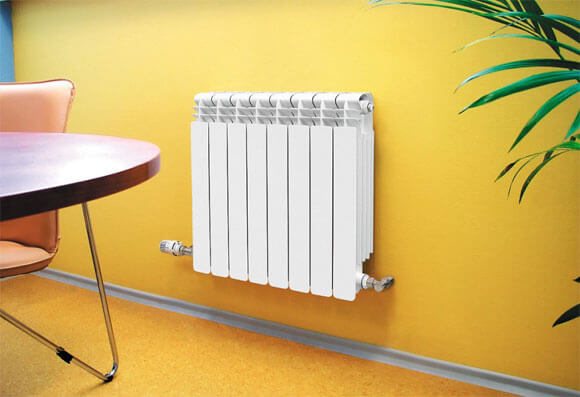

The best way out of such situations is to install electric heating equipment, since there are power grids almost everywhere. The main element of any such heating device is TEN. The efficiency of the heating system largely depends on its type. Typically, domestic heating equipment uses tubular heating elements, as well as elements with a thermostat. The latter make it possible to regulate the operation of the heating system.
Electric heating systems are very easy to use: they do not emit harmful substances, since they do not form combustion products, do not require installation in a separate room, are safe to use, easy to install and regulate. But still, when installing electric heating equipment, you should first check whether the power grid can withstand a high load. You also need to prepare in advance for the fact that you will have to pay a lot of money for electricity.
How to assemble an electric boiler yourself
To assemble a boiler yourself, where you can use teng, you need to familiarize yourself with its design. It consists of the following parts:
- a block and a heating element installed in it;
- security systems and dispatch.
Homemade boilers are smaller in size. than the factory ones, they can be rearranged if necessary from one place to another. To work on the manufacture of a boiler, you will need the following:
- block of heating elements;
- thermostat and temperature sensor;
- steel case with one zone for the heating element, and the second for the control unit.
Since the heating element in the heating system needs to be kept in water all the time, put a liquid level sensor. The permissible power of a homemade boiler is 9 kW.
Connecting heating elements of an electric boiler
Since the power of the heating element is quite high, it is very important that the connection of the supply wires with them is as reliable as possible. Therefore, I advise you to strictly adhere to the following scheme for attaching wires to the terminals of the heating element, presented in the instructions:
When connecting the phase wires to the terminals of the heaters, you must first screw on the m4 nut, then put the washer, then put on the tip-ring of the supply wire, then the washer goes again, after which the spring washer is the grover, and then everything is clamped with the M4 nut.
Zero wire, tightened with an m8 bolt, in the hole located in the jumper between the contacts of the heating element, as shown in the image below:
Now, when the phase wires and zero are connected to the heating element of the electric boiler, it remains to ground the body of the connected wires to the heating elements of the heat exchanger. For these purposes, the ZOTA boiler has a bolt welded to the left of the heater block, to which the grounding conductor is connected.
By the way, be sure to read our article, which shows the structure of heating elements, their main types and areas of application.
The protective earth can be taken from the ground terminal of the control unit, or a separate conductor of the supplementary equipotential bonding system (APE) can be used.
This completes the connection of the electric boiler heating element, it remains only to install a protective casing on the heat exchanger block.
A few more words should be said about water and air temperature sensors, their purpose and location.
On the front panel of the electric boiler control unit, there are two regulators marked - "air" and "water".
Each of them has its own graduation, the numbers indicated on it are the temperature in degrees Celsius.
Thus, you can set the required heat carrier temperature - the "WATER" regulator or the air temperature in the "AIR" room.
The principle of operation here is as follows, as soon as at least one of the indicators set by these regulators is reached, the electric boiler will turn off and turn on again when the indicators fall.
This automates the operation of the boiler, you just need to set the required values and turn it on, then the boiler will work autonomously, maintaining heat in the house without requiring your participation.
Now I think it's clear why temperature sensors are needed. So, for example, a water temperature sensor is installed directly into a heat exchanger, in which a seat is provided for such a case.
Or, as an option, you can simply attach to the heating pipe:
Now the temperature of the heating medium is controlled by the sensor and the boiler will work until it reaches the set level.
The air temperature sensor works in a similar way, it is installed in the room and measures the overall temperature in it. The electric boiler will heat the coolant until the temperature in the room where the sensor is located reaches the desired level.
Electric boilers of various types, models and manufacturers often differ in internal layout, the presence of certain elements, automation systems, etc., but at the same time the general principle of wiring, the choice of the type and cross-section of the cable, protective automatics, as well as the connection remains unchanged.
I hope this instruction for connecting an electric boiler to the mains will be useful not only when installing ZOTA boilers of the "econom" series, but also any others.
Be sure to write your questions, additions and comments to the article, even if you encounter a problem when connecting an electric boiler from another company to the network. Often it is your comments that allow you to supplement articles, correct inaccuracies, and make them more useful.
Heating element and single-phase network. What to screw to what
This case is typical for dachas and old village houses. First you need to generally understand what is at stake and the easiest way to do this is by looking at the following figure:
So, a single-phase electrical network has two conductors - zero and a phase. The picture itself shows two ways to turn on the load - parallel and sequential. These methods differ in how the initial voltage is divided between the elements. In most cases, the heating elements are connected in parallel so as not to lose useful power, the sequential circuit is only suitable for various specific cases. A block prepared for connection to one phase will look like this:
It is also worth paying attention to the choice of the cable, but we will touch on this point a little later, and now let's move on to the three phases
Connecting heating elements of an electric boiler
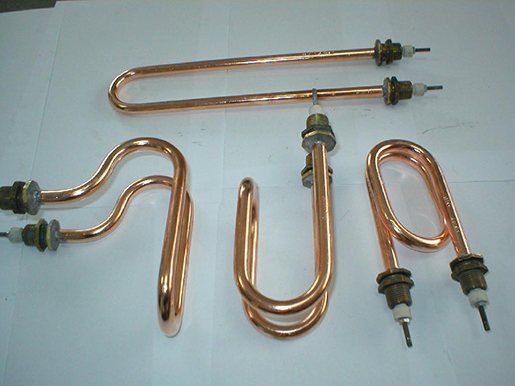

The first thing you need to pay attention to is the rated power of the heating element. By installing a device with a low power, you will receive less heat energy, while consuming a large amount of electricity. And by setting an unacceptably high power, there is a high probability of constant overheating of the device, and an explosion is possible.
As for its location, it must be completely submerged in water, otherwise it will overheat, as a rule, it is installed at the bottom of the radiator. This makes it possible to isolate it from places where air accumulates.In order for it to last longer and less plaque accumulates on it, which leads to a significant loss of efficiency, as well as to corrosion, you need to use a distilled liquid.
It is very important, when you embed a heating element or a block of heating elements into the heating system, to properly seal the end joints, because if the liquid gets on the heating element (spiral), there will be a threat to the inhabitants of the house. Consider the option of connecting to electrical networks with a different number of phases.
If you have one phase, this option is often most typical for summer cottages or old buildings, you need to install a fuse. It is characterized by the presence of two conductors: phase and zero. There are two connection methods - in parallel or in series, the difference is in dividing the initial voltage between the components.
Most often, the connection is performed in a parallel method in order to minimize the loss of useful energy. A series circuit is used extremely rarely, as it involves energy losses. For any of the selected schemes, it is necessary to choose a wire with a large cross-section, since it will be heavily loaded.
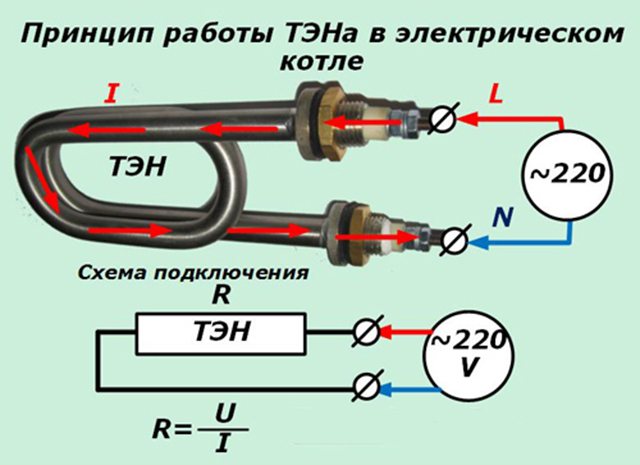

Connection to three phases - the first method is the so-called star, it involves feeding from a 220 V network in the presence of a neutral wire connected from the shield. One jumper is used, connected to zero, and the other three free ends are connected to the phases.
Triangular connection, the incoming voltage in this case is 380 V. By connecting the heating elements intended for use at 220 V here, you risk spoiling them, since they will burn out. The difference between a delta and a star is the absence of a neutral conductor.

